Simple Tips to Stay in a Calorie Deficit Without Starving + 7-Day Calorie Deficit Meal Plan
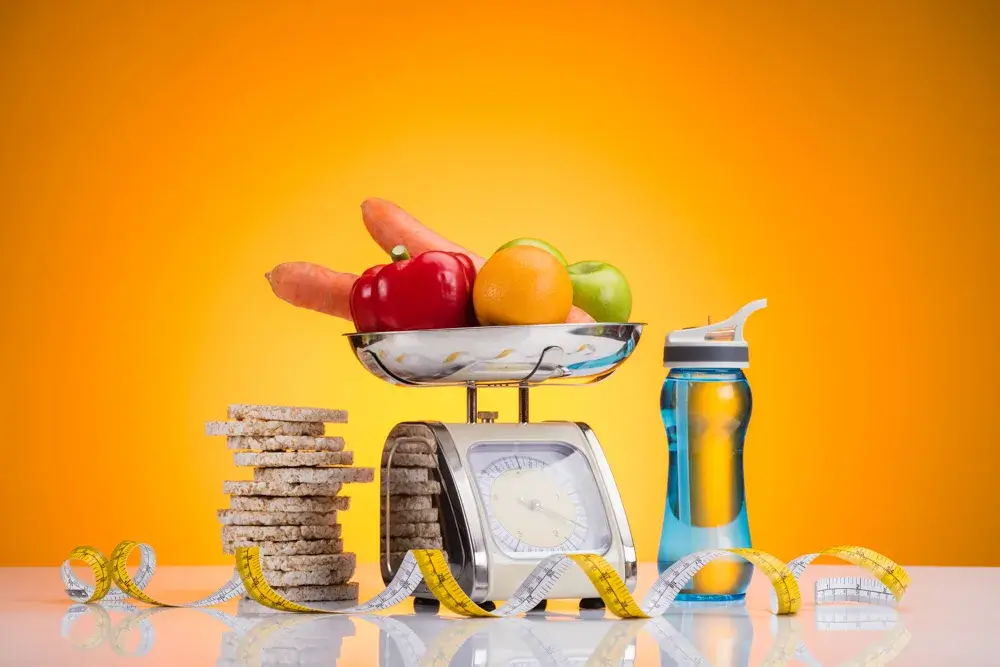
Sick of starving just to lose weight? Read this first.
Calorie deficit is the new trending phrase when it comes to weight loss. But it is not exactly a new term. In fact, it is the basis of weight loss.
You must consume fewer calories than your body burns. You must be in a calorie deficit for fat loss.
Unfortunately, hunger is the #1 deal breaker for most of us when it comes to weight loss. That’s why the term calorie deficit might sound intimidating.
But here’s the truth: you can absolutely stay in a calorie deficit without starving. You just need to do it smarter.
So, What Exactly is a Calorie Deficit
Basically, a calorie deficit happens when you burn more calories than you consume.
Okay, let’s get down to the science of it all, shall we?
A calorie deficit is the foundation of weight loss. It doesn’t matter which diet you follow – keto, Mediterranean, intermittent fasting, or carnivore.
Your body needs a certain amount of calories each day to perform. This includes everything from breathing to powering your workouts. This is known as the TDEE (Total Daily Energy Expenditure)
When you eat fewer calories than your TDEE, your body is forced to use stored energy (body fat) to make up the difference.
This state is what we call a calorie deficit, and it’s the only proven way to actually lose body fat.
The two most important factors for a calorie deficit are your diet and your level of physical activity.
Essentially, you can reach a calorie deficit by consuming fewer calories, increasing your level of physical activity, or both.
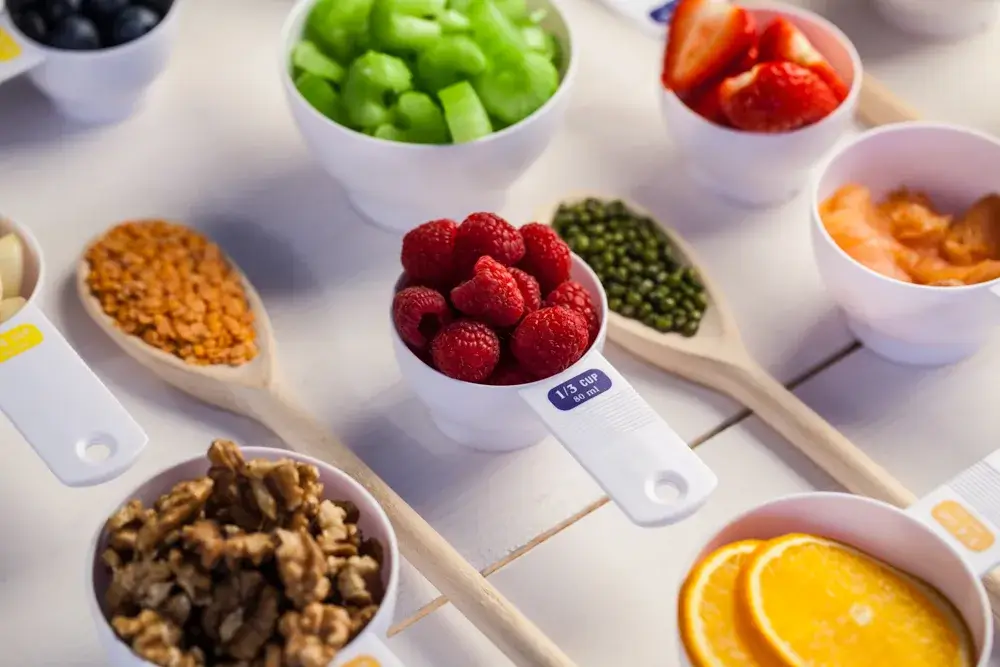
How Much Calorie Deficit Do You Need To Actually Lose Weight?
Research indicates that a 500-calorie deficit may help with weight loss. Specifically, a 300-500 daily calorie deficit should put you on a course to lose around 1 pound weekly.
But remember, the number varies significantly between people depending on various other factors.
Remember, more isn’t always better.
It is super tempting to think the larger the deficit, the faster the weight loss. This is entirely misguided. Cutting calories too drastically can backfire, leading to the dreaded yo-yo effect.
A low-calorie intake over time can lead to:
- Constant hunger and irritability
- Loss of muscle mass
- Fatigue
- Poor sleep
- Slower metabolism over time
So, don’t overdo it. You’d end up bouncing back and forth between overeating and undereating, all without losing any weight.
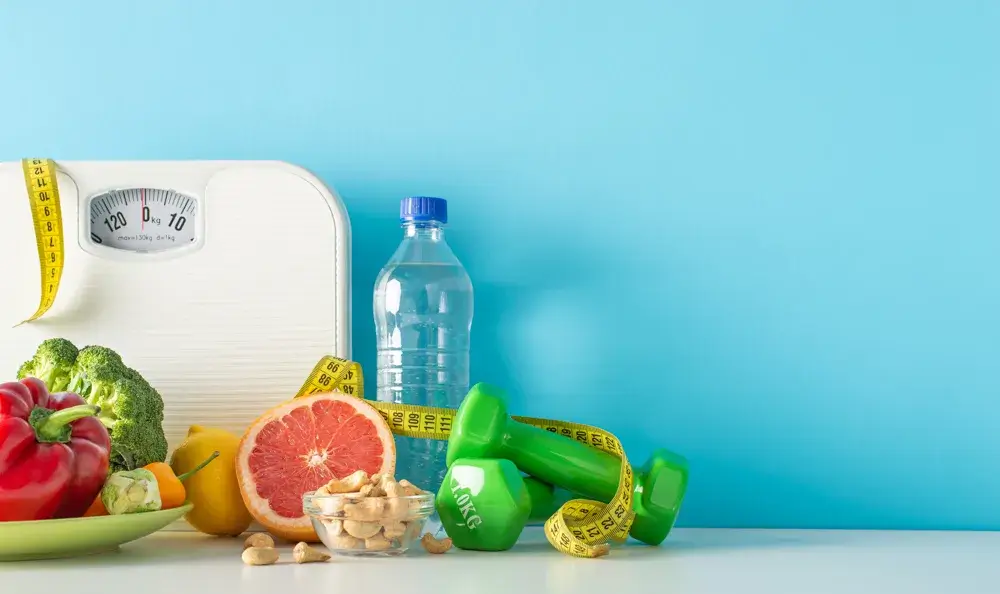
How Do you Calculate your Calorie Deficit?
Now that you know exactly what a calorie deficit is, the next step is figuring out how many calories you personally need to eat to lose weight safely and sustainably.
First step: Estimate your maintenance calories (TDEE)
Your Total Daily Energy Expenditure (TDEE) is the number of calories your body needs to maintain your current weight, based on age, sex, height, weight, and activity level.
You can get this number using an online TDEE calculator or calculate it manually using the Mifflin-St. Jeor equation, a very popular and reliable formula.
This equation gives you the basal metabolic rate (BMR), the minimum calories your body needs to perform basic functions.
BMR for Men: (10* weight in kg) + (6.25*height in cm)- (5*age in years) + 5
BMR for women: 10* weight in kg) + (6.25*height in cm)- (5*age in years) -161
Once you have your BMR, you can get your TDEE by multiplying it by your activity factor.
Specifically:
Activity level. Multiply BMR by. Description
Sedentary (little to no exercise). 1.2. Desk job
Lightly active. 1.375 light exercise
Moderately active. 1.55 moderate exercise
Very active. 1.725. Intense exercise
Super active. 1.9. 2x day training
After establishing your TDEE, go for a moderate 300-500 calorie deficit every day.
Remember, weight loss isn’t linear. Adjust your calorie needs based on progress. Your calorie needs might decrease as you lose weight. So, track your progress and adjust accordingly.

Why Are You Always Hungry on a Calorie Deficit?
So, you’ve tried eating less but end up hangry and moody.
These might be the reasons:
- Skipping meals
Skipping meals to “save calories” might seem smart, but it’s not. You’ll crave a snack or overdo your next meal. It doesn’t work.
- Low-protein meals
If your meals are all carbs and no protein, you’ll be hungry in 1 hour. Protein is the secret to fullness.
- Drinking your calories
Smoothies, lattes, and “healthy juices” are all delicious, but they quickly add up your calories and unfortunately do not fill you up.
- Eating small but calorie-dense meals
Half a bagel and a spoonful of peanut butter is already 400 calories. And you’re still hungry.
The Fix: 8 Simple Tips to Stay Full in a Calorie Deficit
1. Eat More Volume
This simply means filling your plate the smart way. Volume eating is about eating foods high in physical volume but low in calories.
This will allow you to eat more, feel full for longer, and stay within your calorie deficit.
For instance:
1 slice of pizza has 300 calories. Similarly, 1 large bowl of mixed greens, grilled chicken, cherry tomatoes, and light vinaigrette has the same 300 calories.
So you are better off going for the second meal since it offers more nutrients, a high volume of food, for fewer calories.
To eat more volume: add leafy greens, cruciferous veggies, mushrooms, soups with broth, and fruits high in water content.
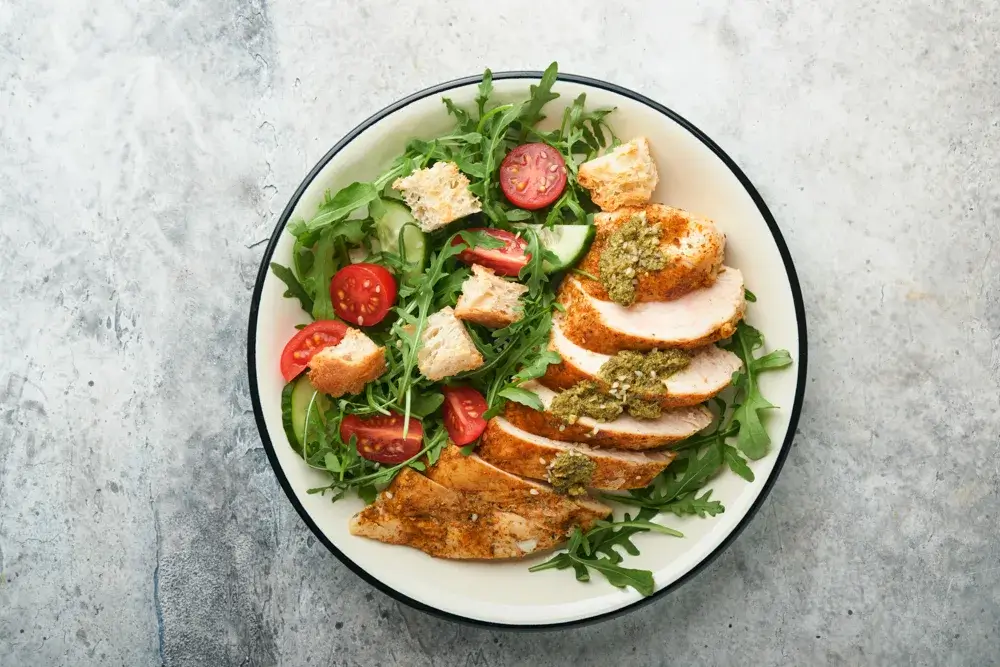
2. Eat More Protein
If there’s a nutrient you should never skip on a calorie deficit, it’s protein.
Protein is the most filling macronutrient, more than carbs and fats. It helps you maintain lean muscle mass when losing weight. Protein also reduces cravings and keeps your blood sugar stable throughout the day. It is non-negotiable on a calorie deficit.
Some excellent protein sources to include in your meals include: eggs, chicken breast, Greek yogurt, tofu, tempeh, edamame, cottage cheese, salmon, and protein powder.
Pro Tip: Aim for 20-30 grams of protein per meal and around 10-15 grams in snacks to reach more than 100g of protein daily.
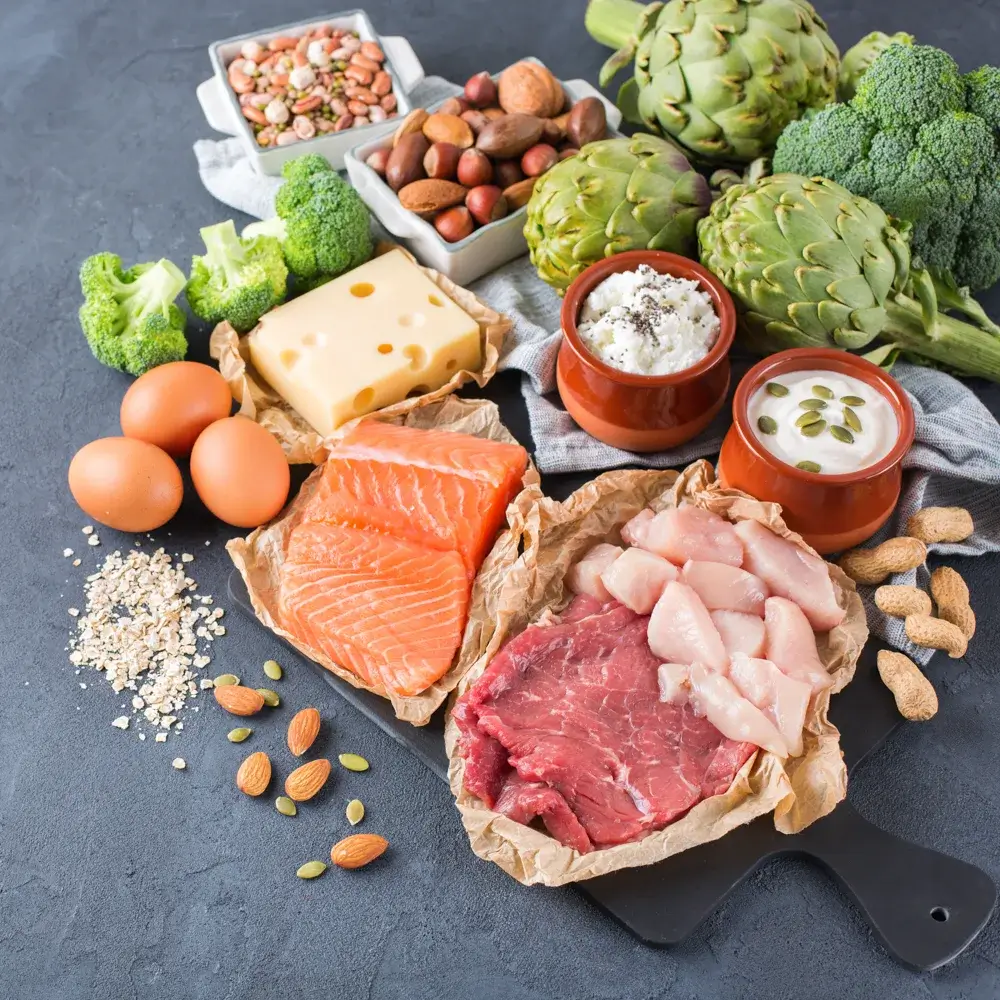
3. Go for High Fiber Carbs
Carbs aren’t the enemy. In fact, the right carbs can help you stay full and energised.
So, to make your calorie deficit manageable, you want high-fiber, complex carbs that typically digest slowly, stabilize blood sugar, and keep you full for hours on end.
Some fantastic choices include oats, sweet potatoes, brown rice, quinoa, lentils, black beans, chickpeas, and even whole-grain bread.
Pro Tip: Pair fiber with protein and a little fat for long-lasting fullness.
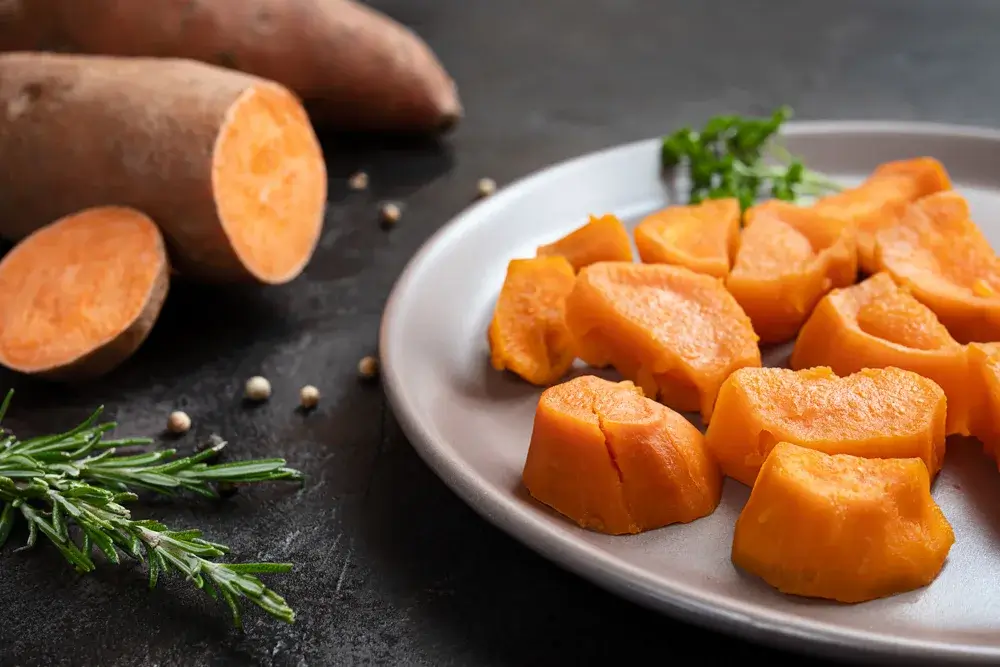
4. Don’t Drink Your Calories
Liquid calories are the worst. They add up pretty quickly, but do very little to curb your hunger.
In fact, research shows that our brains don’t register liquid calories the same way as food that we actually chew. That means you can drink 300 calories and still feel hungry a couple of minutes later.
So, don’t drink your calories.
Infused water, black coffee, herbal teas, and protein coffee are great.
Avoid fancy coffee drinks, store-bought smoothies, and alcoholic beverages.
5. Eat Healthy Fats
Healthy fats are completely essential when in a calorie deficit. They support hormones, brain function, skin health, and yes, help you feel full.
Just remember not to go overboard because they are very calorie-dense.
For instance, a small handful of nuts has 150-200 calories. So portion control is vital.
Some awesome healthy fats include: avocado, olive oil, nuts, and seeds such as almonds, walnuts, chia seeds, and flax seeds. Fatty fish such as salmon and mackerel are also great.
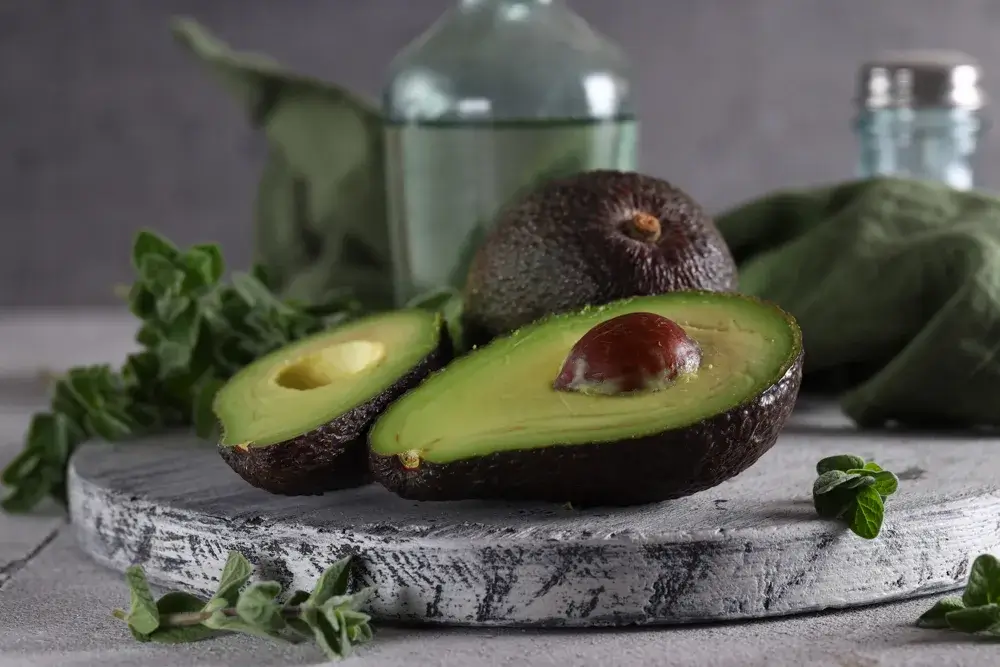
6. Watch your Portion Sizes
Remember, you want to consume less than you burn. So, even nutrient-dense healthy foods can push you out of a deficit if you eat them in large amounts.
And you don’t need to obsessively weigh everything – but having a sense of appropriate serving sizes is important.
Pro Tip: Go for smaller plates or bowls to help you visually control your portions.
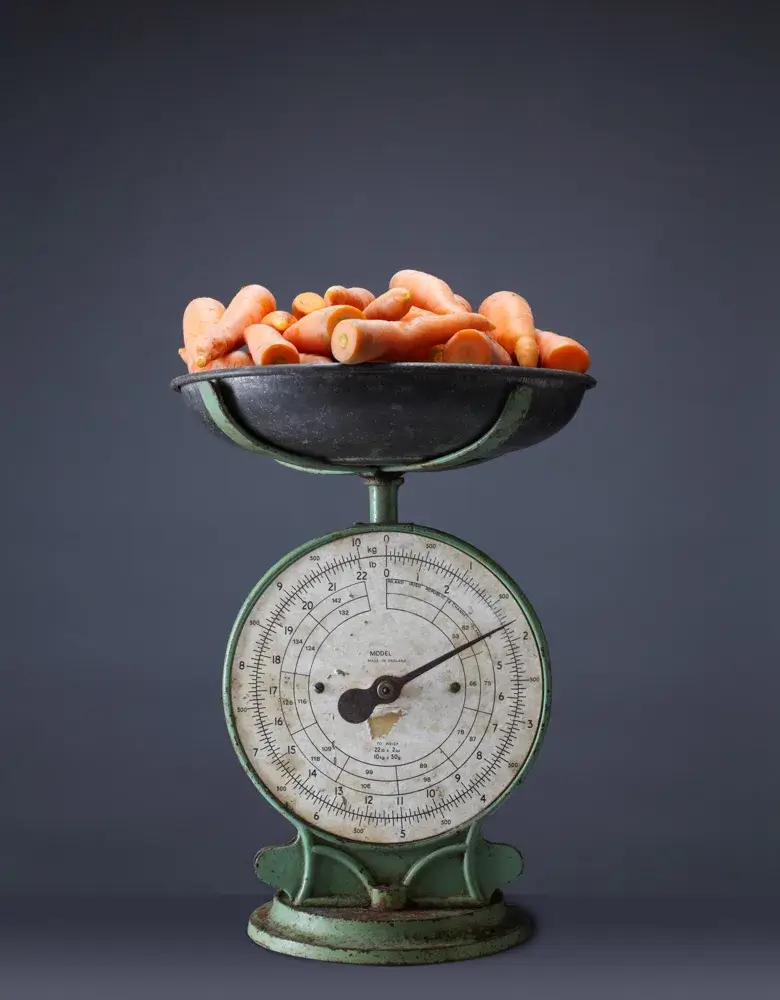
7. Embrace Meal Planning
Unfortunately, “winging it” often leads to skipping meals, overeating in some instances, or going for unhealthy choices.
You’re better off planning your meals so you can stay on track without being overly rigid.
And planning can be as simple as:
- Noting down what you want to eat for the day in your notes app.
- Prepping protein and veggies ahead
- Keeping healthy snacks in hand
8. Don’t be Afraid to Season Your Food.
Unfortunately, if your meals are bland, you might feel unsatisfied, leading to loading up on chips and other snacks to fill in that “flavor void.”
So, flavoring your food is a good plan to make it more enjoyable.Use herbs and spices, mustard, sauces, salsa, vinegar, and fresh lime juice.

7-Day Calorie Deficit Meal Plan ( Target 1200 Calories)
RELATED: 13 CALORIE DEFICIT BREAKFAST IDEAS THAT ARE EASY, FILLING, AND UNDER 400 CALORIES.
Monday- 1,228 kcal
Breakfast (309) – Oats with milk, blueberries & chia
- Rolled oats, dry 40 g – 150
- Nonfat milk 1 cup / 240 ml – 83
- Blueberries 80 g – 46
- Chia seeds ½ tbsp / 6 g – 30
Lunch (366)- Chicken salad with apple
- Chicken breast, cooked 85 g (3 oz) – 140
- Mixed greens 75 g – 18
- Cucumber 100 g – 15
- Tomato 100 g – 18
- Olive oil 2 tsp – 80
- Apple 1 medium – 95
Snack (132)- Greek yogurt with strawberries
- Nonfat Greek yogurt 170 g – ~100
- Strawberries 100 g – 32
Dinner (422)- Turkey, black beans, rice & veggies
- Ground turkey 93% lean, cooked 85 g – ~146
- Black beans (canned, drained) 70 g – ~92
- Tomato sauce ½ cup – 60
- Bell pepper 100 g – 31
- Onion 50 g – 20
- Brown rice, cooked ⅓ cup (~67 g) – ~72
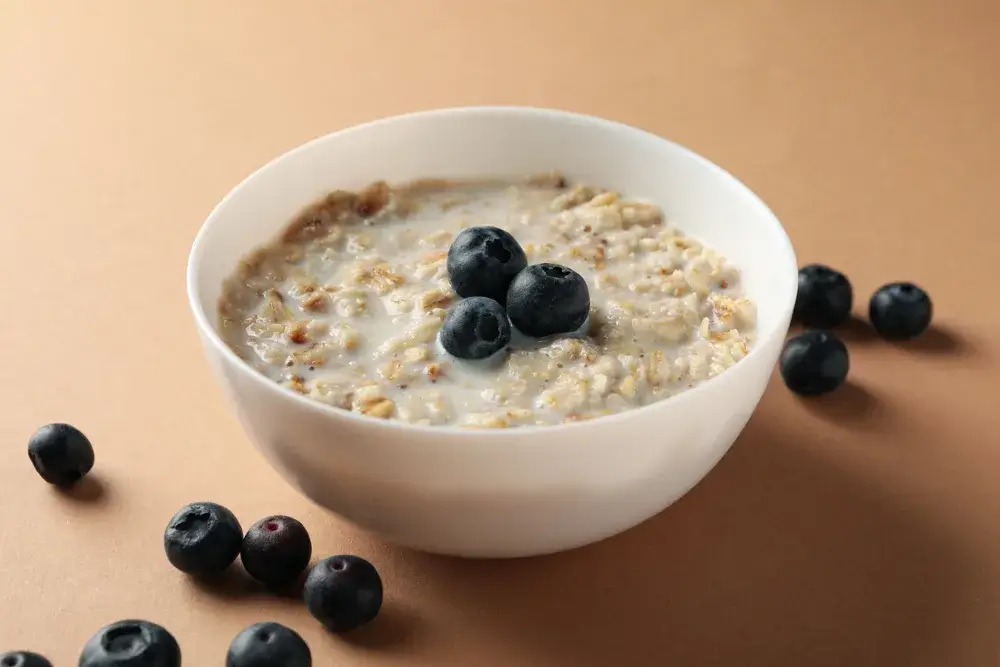
Tuesday- 1,204 kcal
Breakfast (304)- Eggs, toast & avocado
- Eggs 2 large – 144
- Whole-wheat toast 1 slice – 80
- Avocado 50 g (~⅓ med) – 80
Lunch (366)- Tuna sandwich with spinach & carrots
- Tuna (water, drained) 85 g (3 oz) – 100
- Light mayo 1 tbsp – 35
- Whole-wheat bread 2 slices – 160
- Spinach 50 g – 12
- Tomato 100 g – 18
- Carrots 100 g – 41
Snack (139)- Cottage cheese with blueberries
- 1% Cottage cheese ½ cup – 82
- Blueberries 100 g – 57
Dinner (395)- Salmon, rice & broccoli + orange
- Salmon, cooked 100 g (~3.5 oz) – 206
- Brown rice, cooked ⅓ cup – ~72
- Broccoli, cooked 100 g – 55
- Orange 1 medium – 62
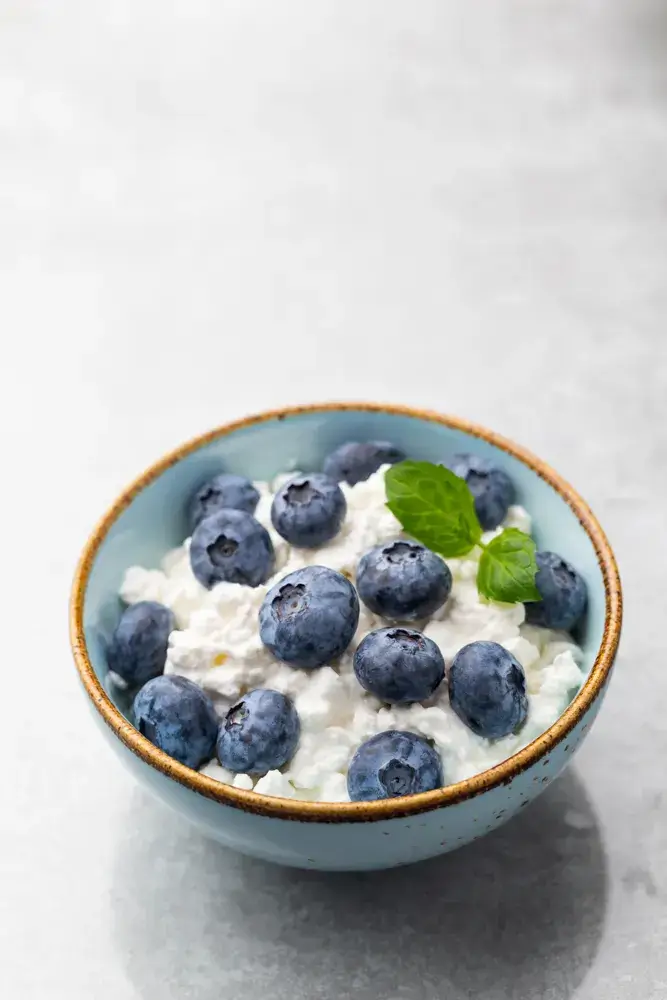
Wednesday 1,194 kcal
Breakfast (276)- Yogurt with granola, banana & chia
- Nonfat Greek yogurt 200 g – ~118
- Granola 10 g – 45
- Banana ½ – 53
- Chia seeds 1 tbsp / 12 g – 60
Lunch (393)- Chicken wrap with avocado & salsa
- Chicken breast, cooked 100 g – 165
- Whole-wheat tortilla 8 in – 120
- Salsa 2 tbsp – 10
- Mixed greens 75 g – 18
- Avocado 50 g – 80
Snack (190)- Apple with peanut butter
- Apple 1 medium – 95
- Peanut butter 1 tbsp / 16 g – 95
Dinner (335)- Shrimp, quinoa & sautéed veggies
- Shrimp, cooked 120 g (~4.2 oz) – ~119
- Quinoa, cooked ½ cup – 111
- Zucchini 200 g – 34
- Bell pepper 100 g – 31
- Olive oil 1 tsp – 40
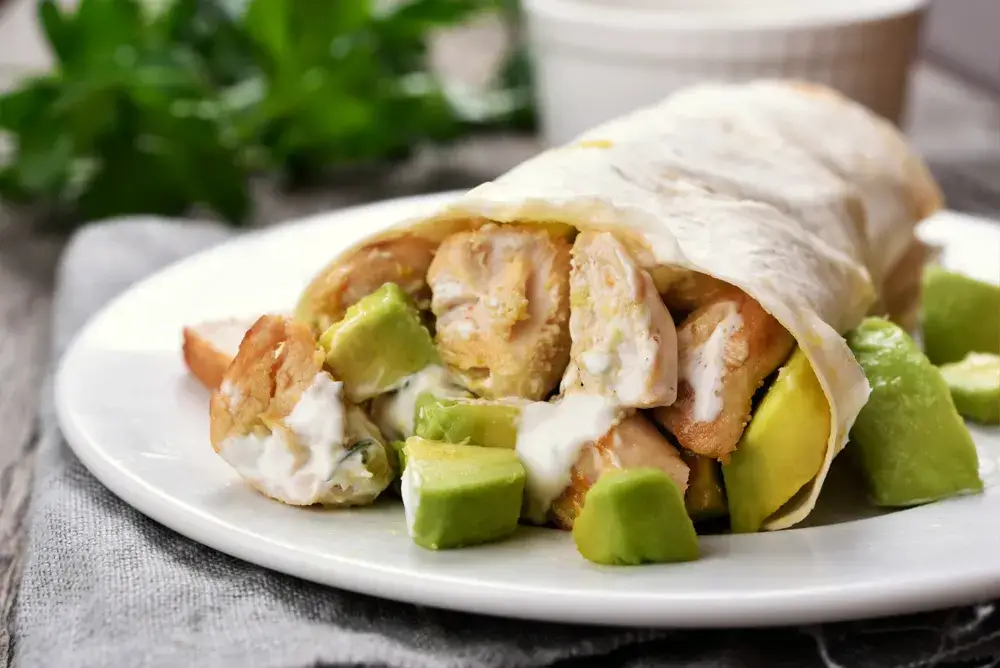
Thursday – 1,204 kcal
Breakfast (272)– Eggs, toast & strawberries
- Eggs 2 large – 144
- Whole-wheat toast 1 slice – 80
- Strawberries 150 g – ~48
Lunch (414)- Black beans, rice, salsa & avocado
- Black beans (canned, drained) 150 g – ~198
- Brown rice, cooked ½ cup – 108
- Salsa 2 tbsp – 10
- Avocado 50 g – 80
- Mixed greens 75 g – 18
Snack (119)- Babybel cheese & grapes
- Babybel Light 1 – 50
- Grapes 100 g – 69
Dinner (399)- Chicken, quinoa & broccoli
- Chicken breast, cooked 100 g – 165
- Quinoa, cooked ½ cup – 111
- Broccoli, cooked 150 g – ~83
- Olive oil 1 tsp – 40
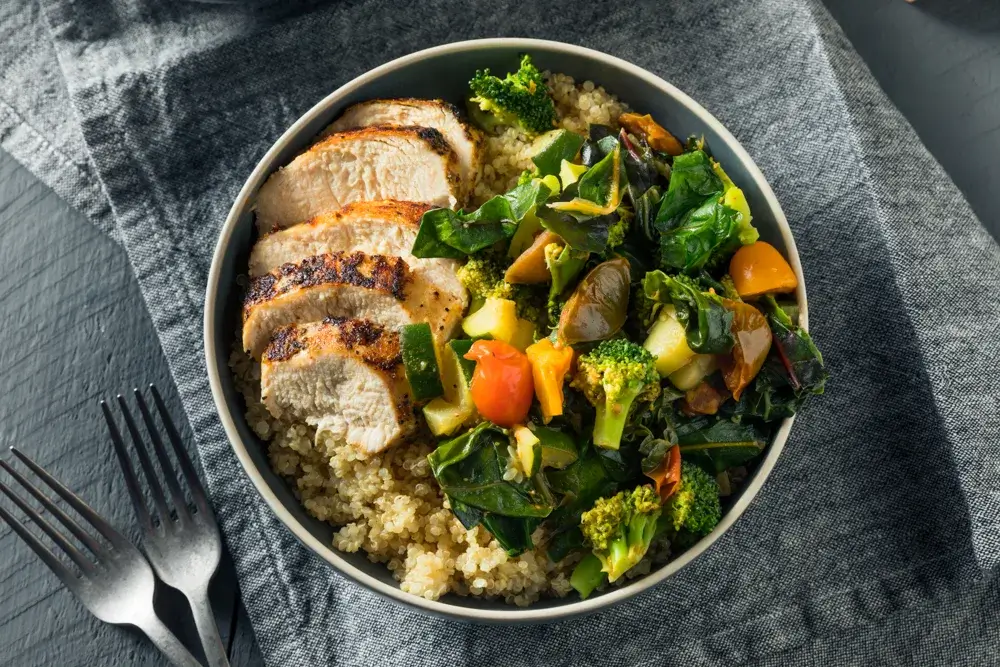
Friday- 1,184 kcal
Breakfast (284)- Skyr yogurt with blueberries, almonds & rice cake
- Skyr, nonfat 170 g – 110
- Blueberries 100 g – 57
- Almonds 14 g (~12 almonds) – ~82
- Rice cake (plain) 1 – 35
Lunch (376)- Turkey, rice & roasted veggies
- Turkey 93% lean, cooked 100 g – 172
- Brown rice, cooked ½ cup – 108
- Bell pepper 100 g – 31
- Zucchini 150 g – ~26
- Olive oil 1 tsp – 40
Snack (135)- Cottage cheese with banana
- 1% Cottage cheese ½ cup – 82
- Banana ½ – 53
Dinner (388)- Salmon, cauliflower rice & green beans
- Salmon, cooked 100 g – 206
- Cauliflower rice 200 g – ~50
- Green beans, cooked 150 g – ~52
- Olive oil 2 tsp – 80
Saturday- 1,204 kcal
Breakfast (286)- Oats with milk & banana
- Rolled oats, dry 40 g – 150
- Nonfat milk 1 cup – 83
- Banana ½ – 53
Lunch (394)- Chicken sandwich with veggies
- Chicken breast, cooked 85 g (3 oz) – 140
- Whole-wheat bread 2 slices – 160
- Light mayo 1 tbsp – 35
- Lettuce + Tomato (~100 g) – ~18
- Carrots 100 g – 41
Snack (145)- Babybel cheese & apple
- Babybel Light 1 – 50
- Apple 1 medium – 95
Dinner (379)- Shrimp, rice & broccoli
- Shrimp, cooked 150 g (~5.3 oz) – ~149
- Brown rice, cooked ½ cup – 108
- Broccoli, cooked 150 g – ~83
- Olive oil 1 tsp – 40
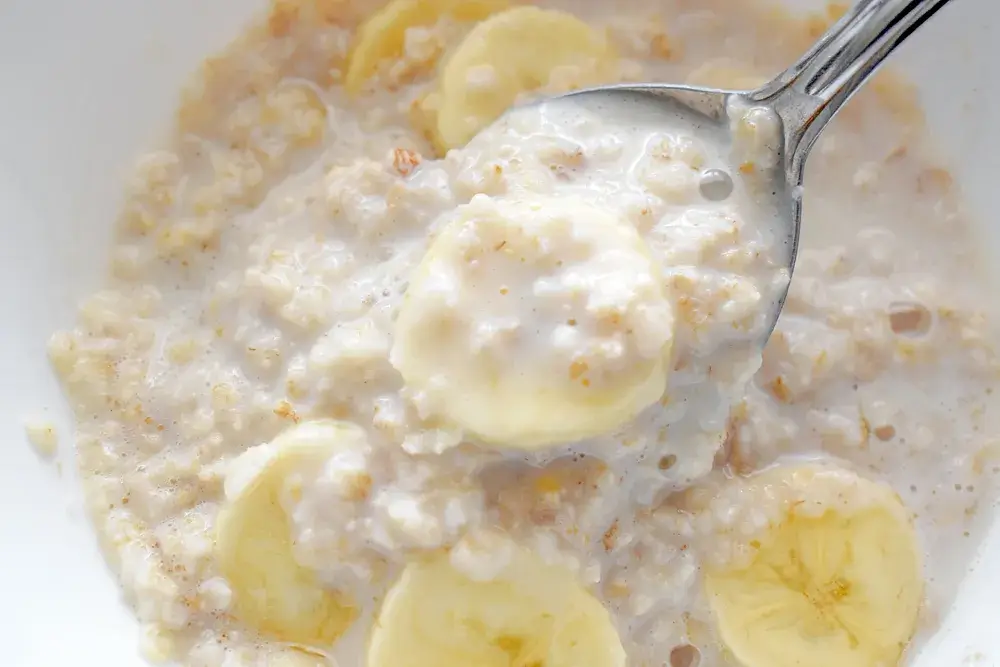
Sunday- 1,201 kcal
Breakfast (307)- Chia pudding with almond milk, blueberries & yogurt
- Chia seeds 2 tbsp / 24 g – 120
- Unsweetened almond milk 1 cup – 30
- Blueberries 100 g – 57
- Nonfat Greek yogurt 170 g – ~100
Lunch (398)- Tofu, quinoa & broccoli
- Tofu, firm 150 g – ~165
- Quinoa, cooked ½ cup – 111
- Broccoli, cooked 150 g – ~83
- Olive oil 1 tsp – 40
Snack (117)- Cottage cheese with clementine
- 1% Cottage cheese ½ cup – 82
- Clementine 1 – ~35
Dinner (378)– Chicken, rice & roasted veggies
- Chicken breast, cooked 100 g – 165
- Brown rice, cooked ½ cup – 108
- Zucchini 200 g – 34
- Bell pepper 100 g – 31
- Olive oil 1 tsp – 40
